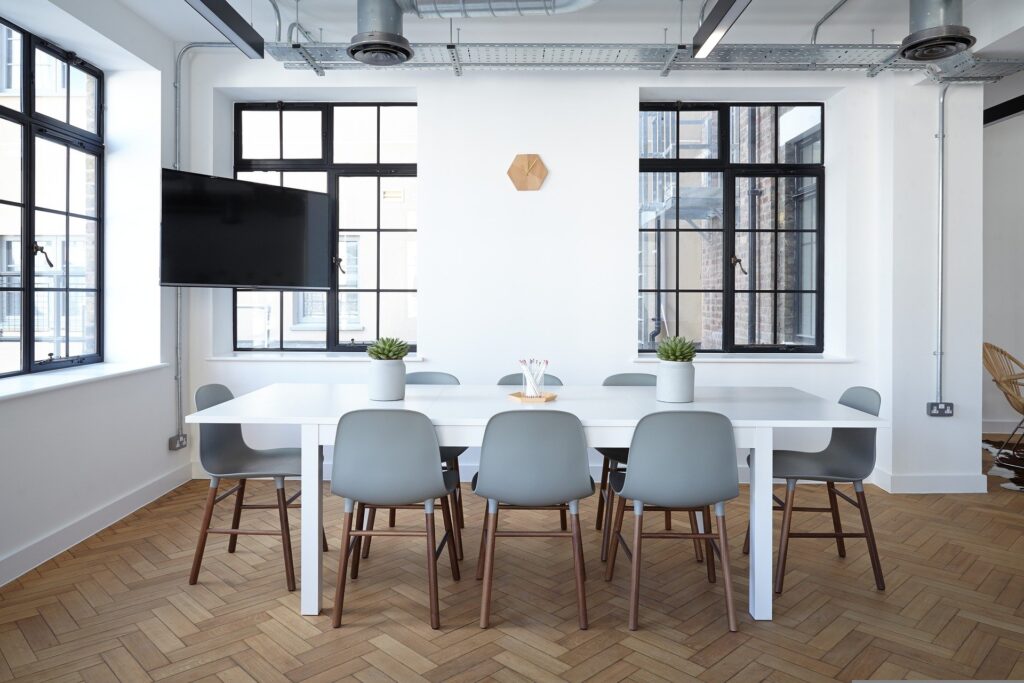Triple-glazed glass is the next step up from double-glazed glass, and it has the features to prove it. But the question is: is triple-glazed glass worth it?
In the UK, an increasing number of homeowners are beginning to ask this question as energy efficiency, property value, and sustainable living become top priorities. Whether fitted in windows or rooflights, the type of glazing you choose can have a big impact on warmth, comfort, and long-term costs. With colder winters, rising heating costs, and growing awareness of environmental standards, glazing plays a more important role than ever.
Triple glazing is seen as future-proofing your property, but how well does it balance its many strengths with its practical limitations? This article will answer that question by looking at the advantages and disadvantages of triple glazing, helping you make the right choice for your home.
WHERE DID TRIPLE GLAZING COME FROM?
Triple-glazed glass was invented in Sweden, a cold climate that benefits vastly from the features that triple glazing has to offer.
The idea quickly gained traction across Scandinavia, where winters are long, dark, and freezing. In these regions, homes are designed to conserve as much heat as possible, and triple glazing became the standard choice decades ago.
Over time, the technology spread to other parts of Europe, particularly Germany and Austria, where high building standards and a focus on energy efficiency made it the natural option.
In the UK, double glazing became common much earlier, but rising energy prices, stricter building regulations, and the drive toward net-zero homes are now pushing triple glazing into the spotlight.
WHAT IS TRIPLE-GLAZED GLASS MADE OF?
One of the advantages of triple glazed glass is that between the three panes of glass is a gas heavier than air, normally argon, that works as an insulator for noise and heat. The design of triple glazing is incredibly simple but extremely efficient.
Argon is the most common choice in the UK because it is widely available and cost-effective, yet it still significantly reduces heat transfer compared with standard air.
Krypton is sometimes used in higher-end products, particularly where glazing spaces are narrower, since it provides better insulating performance than argon.
Xenon is the least common option. It offers the strongest insulation but is rarely chosen due to its much higher price point.
This variety of gas fillings allows manufacturers to tailor triple glazing to different budgets and performance goals.
THE ADVANTAGES OF TRIPLE-GLAZING
Reduced noise levels
Due to the number of panes involved in triple glazing, external noise levels are reduced, and the overall sound pollution in your house will noticeably decrease. The effect that triple-glazed glass has on the noise in your home is not a rule, though. It all depends on the thickness of your panes and the amount of space in between them.
That makes triple glazing especially appealing for homes near busy roads, railways, or even under flight paths. Cutting out the background noise makes rooms feel calmer and more comfortable to spend time in. Many families with young children, as well as people working from home, find that the extra quiet quickly becomes one of the biggest lifestyle improvements.
Increased heat efficiency
Thermal transmittance is measured using a u-value. One of the benefits of triple glazing over double glazing is that it can have a u-value of two points lower than double glazing. Double glazing has an average u-value of 2.8, whereas triple glazing can have anywhere between 0.6 and 0.8. Again, this depends on the gas placed in between the glass panes, but this is a general rule. U-value directly correlates to increased heat efficiency. So, if you have triple-glazed glass, you’ll see the positive impacts quickly.
If your triple glazing allows for better heat retention inside your home, you won’t be battling with external forces to keep your house warm when it is cold outside. This could save you up to £40 a year on heating bills if you choose to alternate from double to triple glazing,
A lower u-value also means your home can maintain a more stable temperature throughout the year, reducing cold spots near windows. This contributes to improved Energy Performance Certificate (EPC) ratings, which are important for long-term property value.
Builders of new homes often select triple glazing to meet stricter building regulations and sustainability targets, which shows just how effective it is in practice.
Reduces condensation
Linking back to heat efficiency, another of the advantages of triple glazing is that its lower u-values help to prevent the cold external temperatures from reacting with the warm temperatures inside your home. Condensation is one of the primary causes of dampness and mould inside your home. So, any solution to such an expensive issue should be considered.
Less condensation also leads to a healthier living environment. Mould spores thrive in damp conditions and are known to aggravate allergies and respiratory problems. By keeping the inner pane warmer, triple glazing reduces this risk and helps maintain good indoor air quality, which is especially valuable for households with children or elderly residents.

Adds security
One of the benefits of triple glazing over double glazing is that with more panes of glass comes increased security. Because the window itself is stronger, the level of security you receive from triple-glazed glass is higher.
This added strength makes forced entry far more difficult, and when combined with new locking systems, triple glazing can give homeowners greater peace of mind. Many insurers also look favourably on properties with higher-quality glazing, as it reduces the overall risk of burglary or damage.
Raises property value
Despite living in a time of astronomical property prices, the demand for housing is ever-increasing. One of the advantages of triple glazing is that, as detailed above, it improves heat retention. This quality directly impacts the value of your house, as a well-insulated home will attract more buyers than an ill-insulated one. This is because a home with effective insulation methods doesn’t need as much constant heating to remain warm. Once again, this is desirable due to the energy crisis the country is currently facing.
Energy-efficient features are now high on the checklist of prospective buyers. Triple glazing is marketed as a premium feature that signals comfort and lower running costs, making a home stand out in competitive markets. For landlords and developers, it can also support higher rental yields or faster sales.
Durability
Triple-glazed glass is stronger and more durable than double-glazed glass, withstanding strong winds and harsh weather conditions. This doesn’t imply by any means that double glazing is weak, only that triple glazed adds an extra level of protection.
Thanks to advanced coatings and sealants, triple glazing can maintain its insulating properties for decades, and high-quality units come with warranties of 20 years or more. With proper maintenance, including checking seals and cleaning drainage channels, triple glazing is likely to outlast double glazing in performance, reducing the need for early replacements.
THE DISADVANTAGES OF TRIPLE-GLAZING
Structural requirements
Due to the sheer weight of triple-glazed glass, it is essential that you have strong foundations to install the triple-glazed glass. If your wall doesn’t possess the structural integrity required to hold triple glazing, then you shouldn’t try and install it.
The weight of the glass can inflict damage which can be expensive to fix. The best thing to do is to contact a professional to assess the condition of your wall and decide whether it would be appropriate to install triple-glazed glass or not.
The added weight also means frames must be carefully chosen. Aluminium and reinforced uPVC are typically best suited to supporting heavier panes. This makes professional installation even more important, as correct fitting ensures the frames can handle the load without warping over time.
Heat deflection
Although triple-glazed glass is amazing at retaining the heat inside your home, its insulating properties also cause it to be good at keeping heat out. Although this is not a disadvantage on the surface, if you’re hoping to bring a natural glowy warmth into your home, you won’t get what you want. The transmission of light will remain uncompromised, but you won’t be able to count on any natural warmth getting into your home.
This can be disappointing for those who enjoy the solar gain that south-facing double-glazed windows provide on sunny days. Triple glazing maintains brightness but blocks much of the free heat, which means rooms may feel cooler unless they’re supported by good passive design or supplementary heating. This reduction in natural warmth might be seen as a drawback compared with double glazing.
The expense
Triple-glazed glass costs about 30%-50% more than double-glazed, and this is without the installation costs included. The upfront cost is hefty but has a lifespan of around 20 years. Given the long life and plethora of advantages of triple glazing, it’s not that high of a price to pay.
When spread across the lifespan of the product, the cost per year of use is often considered reasonable. Many homeowners also see it as an investment that will be reflected in property value when they decide to sell.
Generally, triple-glazed glass is a far superior alternative to double-glazed glass and can provide many enhanced benefits to your home. And although there are disadvantages to installing triple-glazed glass, there are also plenty of advantages.
TRIPLE VS DOUBLE GLAZING: WHICH SHOULD YOU CHOOSE?
Whether double or triple glazing is the better choice really comes down to your home and your priorities. Double glazing still works well for many properties in milder parts of the country, giving solid insulation and noise reduction without the higher upfront cost.
But in colder regions, busy urban areas, or new builds designed with energy efficiency in mind, triple glazing has the edge. For homeowners who care about long-term comfort and sustainability, it strikes the best balance of performance and value.
WHEN IS TRIPLE GLAZING WORTH IT?
Triple glazing makes the biggest difference in homes with high energy demands, lots of outside noise, or exposure to tough weather. It’s also a smart option if you’re planning a renovation or building from scratch, since regulations and sustainability targets are moving steadily toward higher insulation standards.
If your home already has good double glazing and you live in a milder climate, the change may feel less dramatic. The key is to weigh up your own circumstances to see whether triple glazing is the right next step.
WHAT WE CAN DO FOR YOU
Our team at Rooflight Centre is composed of friendly and dedicated professionals that will answer any questions you may have and help you out the best they can to achieve your dream home.
We’ll guide you through your options, explain the differences between double and triple glazing, and recommend the best solutions for your property. Whether you’re upgrading a single room or undertaking a larger project, our team is here to ensure you get the right advice and long-lasting results.
If you’re interested in learning more about any of our products or services, contact us now!

